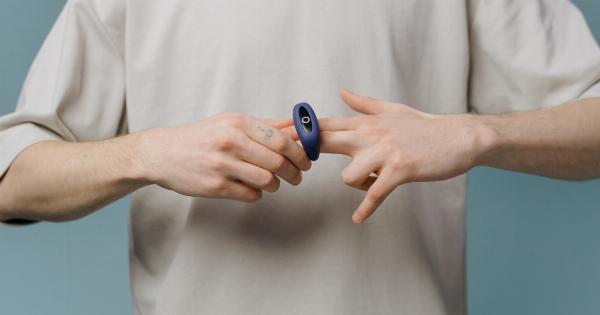Sexual health is an important aspect of overall wellness, and many factors can affect it. One of these factors is the heartbeat, which can have a significant impact on women’s sexual functioning.
Heart rate variability, or the variation of time intervals between heartbeats, is linked to sexual arousal, desire, lubrication, and orgasm. Understanding these connections can help women improve their sexual health.
Heart Rate Variability and Arousal
Heart rate variability (HRV) is the change in time intervals between heartbeats and reflects the autonomic nervous system’s activity. High HRV is associated with better health outcomes, including sexual health.
Research has shown that HRV is linked to sexual arousal, which involves a physical response to sexual stimuli.
In one study, women with higher HRV had stronger genital arousal responses to erotic stimuli than those with lower HRV. Women with higher HRV also reported higher levels of sexual desire and satisfaction.
This suggests that women with better autonomic function may have an easier time achieving sexual arousal and experiencing pleasure.
Heart Rate Variability and Desire
Besides arousal, heart rate variability may also affect sexual desire, which involves psychological and emotional factors.
Research has suggested that HRV is related to sexual motivation and the ability to experience positive emotions during sexual activity.
In a study of sexually active women, those with higher HRV reported higher levels of sexual desire, arousal, and orgasm. Women with lower HRV had more negative emotions during sexual activity and lower satisfaction levels.
This suggests that HRV may play a role in women’s willingness and ability to engage in sexual activity, as well as their pleasure from it.
Heart Rate Variability and Lubrication
Lubrication plays a crucial role in sexual activity, as it helps reduce friction and prevent discomfort. Heart rate variability may impact lubrication by affecting vaginal blood flow, which is essential for vaginal lubrication.
Studies have shown that higher HRV is associated with increased vaginal blood flow during sexual arousal, leading to more significant lubrication.
Women with lower HRV may struggle with vaginal dryness, making sexual activity less comfortable and pleasurable. Improving heart rate variability may help increase vaginal blood flow and, in turn, improve lubrication.
Heart Rate Variability and Orgasm
Orgasm is the peak of sexual pleasure and is essential for sexual satisfaction. Heart rate variability may impact orgasms by influencing the physiological responses that occur during sexual activity.
Research has found that women with higher HRV tend to have more intense and more regular orgasms. Women with lower HRV may struggle to reach orgasm or have weaker orgasms.
This suggests that improving heart rate variability may help enhance women’s ability to achieve orgasm and increase their pleasure during sexual activity.
Factors that Affect Heartbeat and Sexual Functioning
Several factors can affect a woman’s heartbeat and, in turn, her sexual functioning:.
- Menopause: Hormonal changes during menopause can affect heart rate and lead to reduced arousal, desire, and lubrication.
- Stress: Stress can increase heart rate variability but may also lead to reduced sexual desire, arousal, and satisfaction.
- Exercise: Regular exercise can improve heart rate variability and promote sexual health by increasing blood flow and reducing stress.
- Medications: Some medications can affect heart rate and sexual functioning, so it’s essential to talk to a healthcare provider about any side effects.
Ways to Improve Heart Rate Variability and Sexual Functioning
Improving heart rate variability can be beneficial for women’s sexual health and overall well-being. Here are some ways to promote better heart rate variability and sexual functioning:.
- Breathing exercises: Deep breathing exercises, such as yoga or meditation, can help promote better heart rate variability and reduce stress.
- Cardiovascular exercise: Regular cardiovascular exercise, such as running or biking, can improve heart rate variability and promote better blood flow.
- Healthy diet: Eating a balanced diet rich in fruits, vegetables, and whole grains can support heart health and promote better sexual functioning.
- Stress reduction: Finding ways to manage stress, such as through mindfulness techniques or therapy, can help reduce the negative impact of stress on sexual functioning.
- Medical treatment: If hormonal changes or medications are impacting heart rate variability and sexual functioning, talk to a healthcare provider to discuss treatment options.
Conclusion
The heartbeat plays an essential role in women’s sexual functioning, with heart rate variability linked to sexual arousal, desire, lubrication, and orgasm.
Improving heart rate variability can promote better sexual health and overall wellness by promoting better blood flow, reducing stress, and enhancing enjoyment and satisfaction during sexual activity.



























